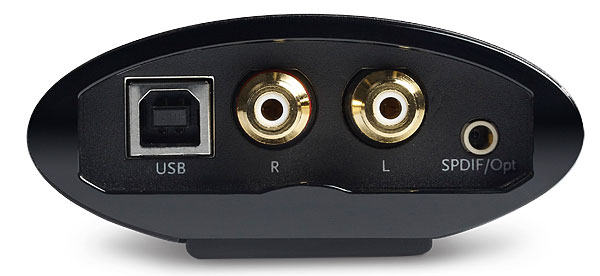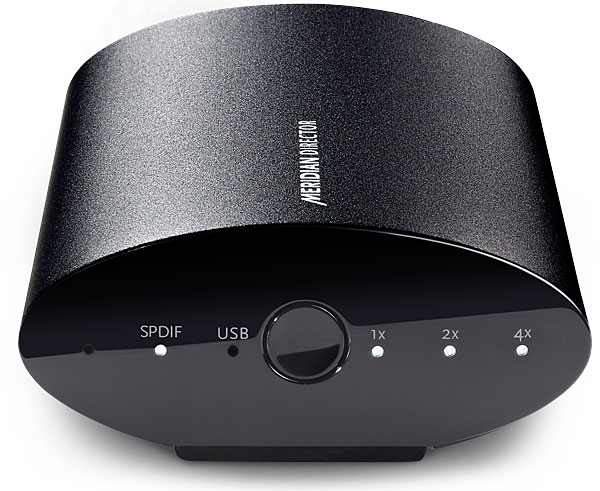Meridian Director DAC
Listed · 45 Views
0 Watchers
Items from this seller
This listing has ended.
Listings Similar to Meridian
Time Left: Listing Sold
This listing has ended.
| Condition | |
| Payment methods | |
| Ships from | Portland, OR, 97223 |
| Ships to | United States |
| Package dimensions | unspecified |
| Shipping carrier | UPS |
| Shipping cost | $20.00 |
| Research Pricing |
I am selling my Meridian Director DAC. I have the DAC, power supply and optical to coax adapter, but no original box or packaging. Here is an article from Sound and Vision about this unit. Enjoy!
PRICE $699
AT A GLANCE
Plus
Enhances computer audio
Sleek design
High-end build quality
Minus
No headphone jack
Ambiguous indicators
THE VERDICT
The Director is the best USB DAC we’ve heard yet.
I will never forget the moment when I first heard digital audio in 1985. It was a profound disappointment. I had just bought my first CD player and played my first Compact Disc. The sound was harsh and alienating. How could that be? CDs offered perfect sound forever. There must be something wrong with my ears, I thought. It took years to trust my senses and rethink my digital signal source. The big epiphany came a few years later when I got into DACs, or digital-to-analog converters, and staged a three-way comparison between products by Meridian, Theta, and Enlightened Audio Designs. Not only were they all stunningly better than any of my previous CD players—they were all stunning in different ways. That was my introduction to Meridian, one of the most distinguished companies in digital audio, and it was a formative experience.
The memory came back to me when I plugged in the Meridian Director USB DAC, from a product category that is triggering new epiphanies. I hooked it up to my desktop system, started playing The Next Day, David Bowie’s comeback album, and then had to hunt around the room for the top of my head because it had just been blown off. It was the voice that did it. The Director made the elusive Bowie stand out like a flesh-and-blood human against the skeletal backdrop of guitar, bass, and drums. What was even more surprising was that I had played the same music through Meridian’s Explorer DAC just a few months before. The Director was not just better, as you’d expect in a step-up model—it was another sensation altogether.

Like the Explorer, the Director is a curved extruded-aluminum box with oval-shaped front and back end caps. It is black instead of silver and slightly longer. And it is intended for a different application: While the Explorer is targeted for portable use where it will drive headphones, presumably from music stored on a computer, the Director, according to Meridian’s director of product management Ken Forsythe, “is specifically designed to provide the highest quality replay from digital sources—including, but not solely, a computer—into an analog audio system.” In lieu of the Explorer’s mini-jack headphone output, the Director has a fixed analog output with RCA jacks and needs to be connected to a traditional preamp, receiver, or other component with its own volume control. For headphone listening, you’ll need to tap that component’s headphone output.

Inputs include USB and a 3.5mm mini-jack that accepts digital input either optically or coaxially with supplied adapters. As with any decent DAC nowadays, the USB input uses asynchronous clocking to fix computer-generated bitstream timing errors. The unit is self-powered with USB input but needs a supplied external power supply when used with optical/coaxial-in.
On the other side is a button that selects between the two inputs and their LEDs. Three more indicators labeled 1x, 2x, and 4x identify sampling rates of 44.1/48, 88.2/96, and 176.4/192 kilohertz. This doubling up saves space, and it makes sense, given that the second and third pairings are multiples of the first. But the sampling rates of my music library are all over the place, and I’d prefer to have separate indicators for each one (I offered the same criticism about the Explorer). Digital sticklers, please note that the DAC uses separate oscillators for 44.1- and 48-kHz signals and their multiples; and incoming 44.1- and 48-kHz signals are upsampled to 88.2 and 96 to raise filtering out of the audible domain.
No questions have been asked about this item.
Ask the seller a public question
You must log in to ask a question.
Return Policy
Return Window
Returns are not accepted on this item.


